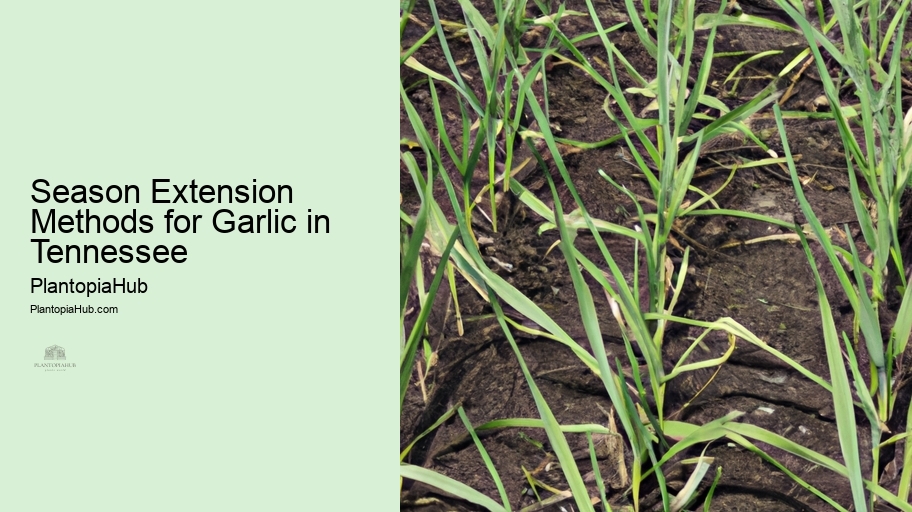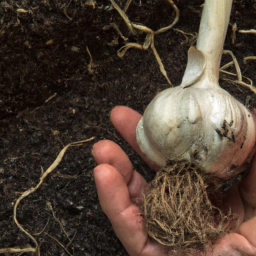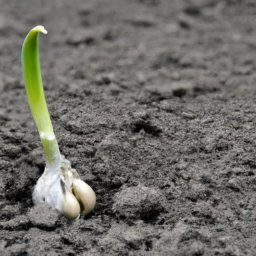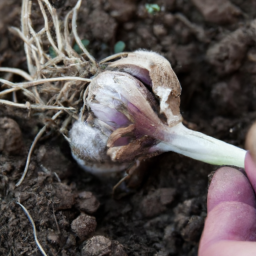

When selecting garlic varieties for Tennessee, it's crucial to consider the local climate. Garlic Storage and Preservation Tips for Tennessee Gardeners . The state's diverse weather conditions, from hot summers to cold winters, require adaptable garlic types.
Furthermore, softneck varieties such as "Inchelium Red" and "Silver White" are suited for milder regions of Tennessee. They're known for their easy braiding, making them popular choices for market growers.
In conclusion, adaptability is key when choosing garlic varieties for Tennessee. Consult with local agricultural experts or your county extension office for personalized recommendations based on your specific microclimate and goals.
Timing is everything when it comes to planting garlic in Tennessee. Typically, the best planting dates fall between late September and early November. This timeframe allows garlic cloves to establish roots before winter and ensures robust growth in the spring.
However, specific planting dates may vary depending on your location within the state. In warmer areas, earlier planting in September is advisable, while cooler regions can benefit from a late October start. To pinpoint the perfect planting window, monitor local temperature trends and consult the USDA hardiness zone map for Tennessee.
To sum up, choosing the optimal planting dates for garlic in Tennessee is a crucial step in ensuring a successful harvest. Local climate and conditions should guide your decision to maximize your garlic crop's potential.
Curing and Storage SolutionsGarlic's success begins with the soil it's planted in. In Tennessee, preparing your soil correctly is essential for healthy garlic growth.
Begin soil preparation in late summer or early fall. First, remove any weeds and debris from the planting area. Next, enrich the soil with organic matter like compost or well-rotted manure. Garlic thrives in slightly acidic soil with a pH between 6.0 and 7.0. Conduct a soil test to ensure the pH is within this range.
In conclusion, soil preparation is a critical factor in successful garlic farming in Tennessee. Investing time and effort in this stage will pay off with healthy plants and bountiful harvests.


Proper garlic planting depth and spacing are key factors in achieving a successful harvest in Tennessee. When planting garlic, ensure that each clove is planted at a depth of 2-3 inches below the soil surface. Planting too shallow can expose cloves to freezing temperatures, while planting too deep may hinder growth.
Adequate spacing is equally important. Space individual garlic cloves approximately 4-6 inches apart within rows, leaving 12-18 inches between rows. This spacing allows for optimal air circulation, reduces the risk of disease, and ensures each bulb has enough room to grow.
In conclusion, paying attention to garlic planting depth and spacing in Tennessee soil is vital for a successful crop.
Effective watering strategies are crucial for garlic cultivation in Tennessee's variable climate. During the fall and winter, when garlic establishes roots, monitor soil moisture levels and provide supplemental irrigation if the soil becomes excessively dry. Aim to keep the soil consistently moist but not waterlogged.
In the spring, as garlic begins active growth, adjust your watering routine. Farmers' Cooperative Organizations Reduce the frequency of watering but increase the volume to encourage bulb development. Maintain soil moisture to prevent stress on the garlic plants.
To sum up, tailoring your watering strategy to the specific season is essential for successful garlic farming in Tennessee. Adequate moisture management will result in robust, healthy garlic bulbs at harvest time.


Fertilization is a critical aspect of garlic cultivation in Tennessee.
Additionally, consider using organic amendments like compost or well-rotted manure to improve soil fertility. Organic matter enhances soil structure and nutrient retention, contributing to healthy garlic growth throughout the growing season.
In conclusion, meeting the fertilization needs of your garlic crop is essential for achieving robust yields in Tennessee. Properly nourished plants are more resistant to pests and diseases, ensuring a successful harvest.
Protecting your garlic crop from pests is crucial for a successful harvest in Tennessee. Gardening Workshops and Seminars Common pests include aphids, thrips, and onion maggots. To deter these invaders, consider using companion plants like marigolds and chives, which naturally repel pests.
If pest infestations occur, organic solutions such as neem oil or insecticidal soap can help. Regularly inspect your garlic plants for signs of pest damage and take immediate action to prevent further harm.
In conclusion, implementing pest control solutions is essential for maintaining healthy garlic crops in Tennessee. A proactive approach to pest management will safeguard your harvest and promote strong, vigorous plants.

Creating a customized garlic planting calendar for your Tennessee location involves considering factors like frost dates, local climate variations, and the garlic varieties you plan to grow. Start by determining the average date of the first fall frost and work backward to establish planting dates. It's important to align your calendar with your specific microclimate and garlic variety requirements, ensuring the best timing for planting and harvesting.
Organic garlic farming in Tennessee offers several benefits. It promotes soil health, reduces chemical inputs, and produces garlic that meets high organic standards, appealing to health-conscious consumers. Organic practices also contribute to environmental sustainability by minimizing the impact on ecosystems. Furthermore, the demand for organic garlic continues to grow, making it a profitable venture for farmers who embrace these practices.